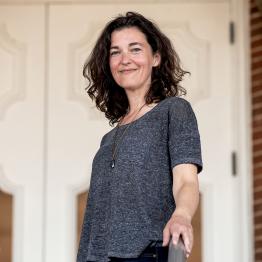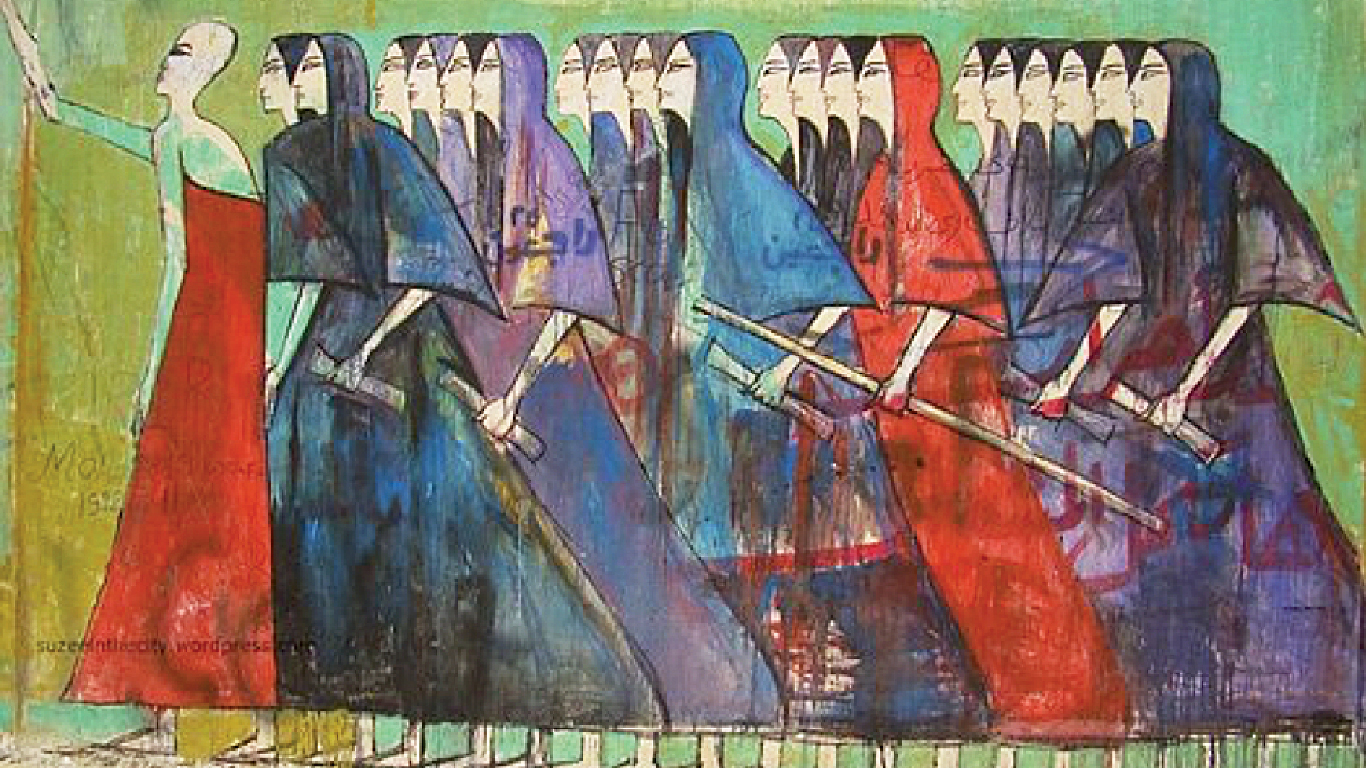Kat Hammond on Revolutionary Street Art
While growing up in the Midwest, Kat Hammond encountered negative attitudes and stereotypes provoked by the events of 9/11. It propelled her interest in gaining a fuller understanding of the people, cultures, and artists of the non-Western world. As an undergraduate student of art history, she was captivated by lesser known branches of contemporary art and by examples of people responding to their experiences in ways both subtle and complex as well as outside the mainstream history books.
“There was a ripple effect after 9/11, leading to the demonization of certain groups of people,” says Hammond, MA ’10, PHD ’18. “I saw it happening in this region in Ohio, and I was drawn to try to understand more about these people through their art.”
After earning her master’s degree in art history, she taught courses with titles like Non-Western Art History. Her students were dissatisfied with the historically simplified version of what constitutes the artistic identity of the Middle East, easily recognizing the biases built into the historical framing of art from outside the Western canon.
“When we studied Egyptian art, it was all ancient work, all pyramids and pharaohs, and nothing about this contemporary moment,” Hammond recalls. “My students were asking to see contemporary Egyptian art. My own fascination with this absence led me to begin asking my own questions in a much deeper way.”
In January 2011, a revolution was emerging across Egypt, taking shape on handheld devices and across screens, as documented and covered by citizen activists and journalists on the street. As Hammond describes it, street art in Egypt became immediately prominent, and she felt drawn to understand. This led to the College of Fine Arts’ Interdisciplinary Arts doctoral program in 2013.
Imagine looking at pieces of street art as visual documents of history, as records of the thoughts and voices of the artists, activists, and communities who contributed to the work. How do murals that reflect a tumultuous moment in time help to write the historical narrative for future generations?
“I think there are assumptions that art history is inherently confining, with strict categories. But I think the field is becoming more and more interdisciplinary. Getting to work with others who come at art history from a range of backgrounds has been really helpful for me,” Hammond says.
In her dissertation, Historiography, the Global Contemporary, and Street Arts of the Egyptian Revolution, Hammond analyzes artworks created in Cairo between 2011 and 2013, including paintings and murals on Mohamed Mahmoud Street by Ammar Abo Bakr and Alaa Awad; films produced by the Mosireen collective; and the documentary film Crop, co-directed by Marouan Omara and Johanna Domke.
These artists and their artworks narrated and documented the unfolding of the revolution’s events, countering those versions published by state-sponsored and international media outlets. The artists claimed the agency and authority, and through the media of paint and film, provided a counter-narrative to the official account.
Accessing these works online and reaching out directly to the artists and filmmakers through video and email interviews, as well as using translation services, allowed Hammond to sufficiently overcome inherent language, distance, and access barriers.
“By the time I started researching this topic in earnest, there were no study abroad opportunities that would give me access to the region I was focusing on. Access was prohibited, meaning I would have to find alternative means to reach my subject.”
Hammond’s analysis finds connections between the work of documentary film projects and the street artists working to draw attention to and record changes in Egypt during the revolution’s early moments. Films and videos created by citizen journalists, documentary film collectives, and activists on site were defining history and would come to define this revolution from the street. Guiding Hammond’s work is a belief that exploration and sharing of knowledge can be a tool to counter stereotypical assumptions, a driving force that inspired her scholarship from its inception.

